If you walk through any pet shop today you’ll find rawhide taking up a large part of the treats section.
These are long-lasting treats made up of the inner layer of skin of animals like cows and sheep, treated and then shaped into sticks or “bones”.
Rawhide has become increasingly popular as a dog treat over the past few years.
But it has come under a lot of criticism too because – despite their popularity – rawhide treats hold a lot of risks for dogs.
So here is a quick rundown of the pros and cons of rawhide.

Positives
- Dogs love to chew, and without having something specific to chew on, they’ll often go for whatever’s available. Giving them something that isn’t your furniture to chew on is always a good idea.
- It’s also good for puppies to have something to chew on to relieve their teething pain, as well as helping them build strong jaws.
- Rawhide chews are very long-lasting, requiring a lot of chewing to break off even a little piece.
- As your dog’s saliva softens up the chew, their teeth will be able to break through the hide. The rawhide around the holes made by their teeth will rub off plaque and tartar from your dog’s teeth as they do this.
Negatives
Chemicals
Making rawhide treats requires a lot of chemicals, many of them extremely toxic.
There are several steps in the process where these chemicals are washed off, but if any of them are left behind, they can be incredibly damaging for your dog’s health.
Let’s break these chemicals down in order of when they’re used.
Preservative #1 – Formaldehyde
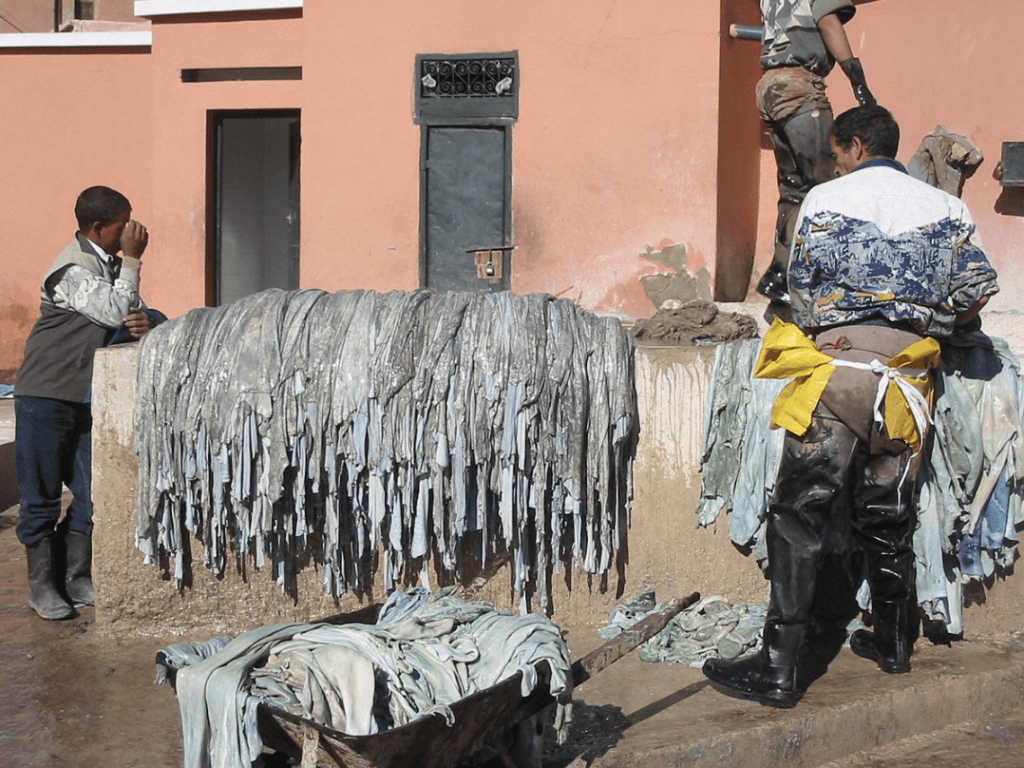
When hides are taken from the slaughterhouse to the tannery, they will be dunked in chemicals like formaldehyde.
This is done to slow (not stop) the rotting of the hides before they can be turned into leather.
Formaldehyde is incredibly toxic to all mammals in large doses, and causes cancer in lower dosages.
If the formaldehyde isn’t removed properly after this stage, then there will likely be low doses of it in the rawhide treat.
This has been found to be most common in chews from South East Asia, as the hot, humid climate makes decay a much faster process, so formaldehyde is used more often.
Strong Alkalis
After preserving the hides are soaked in a strong alkaline (the opposite of acidic) solution to strip hair and fat from them so the layers of skin can be separated. This process is called “liming”
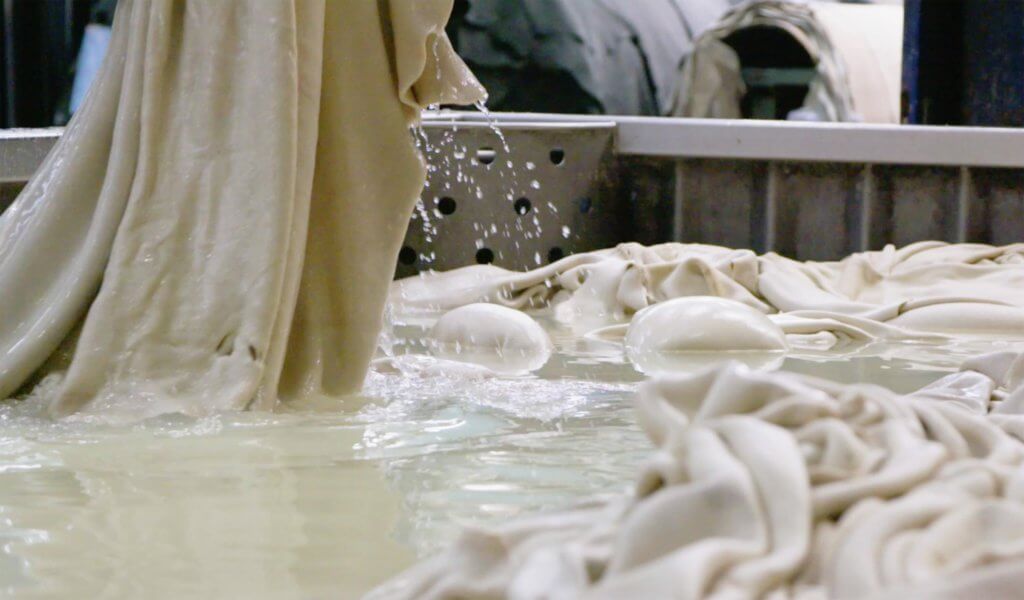
The outer layers will become leather, the inner ones are rawhide.
The alkalis used at this stage can cause nasty burns to your dog’s mouth and irritate their digestive system if they aren’t removed.
Bleaches
The rawhide now gets washed in bleaches to whiten them and get rid of any nasty smells of rotting leather.
Traces of these bleaches left behind can be very damaging for your dog’s health if ingested. Bleach reacts with acids in your dog’s stomach, releasing chlorine gas, which is incredibly toxic.
Dyes
Next, to make the rawhide look appealing to you and tasty to your dog, dyes will be added.
Titanium dioxide (E171) is sometimes used as a white colour if the bleaching hasn’t given a white enough tint to the rawhide.
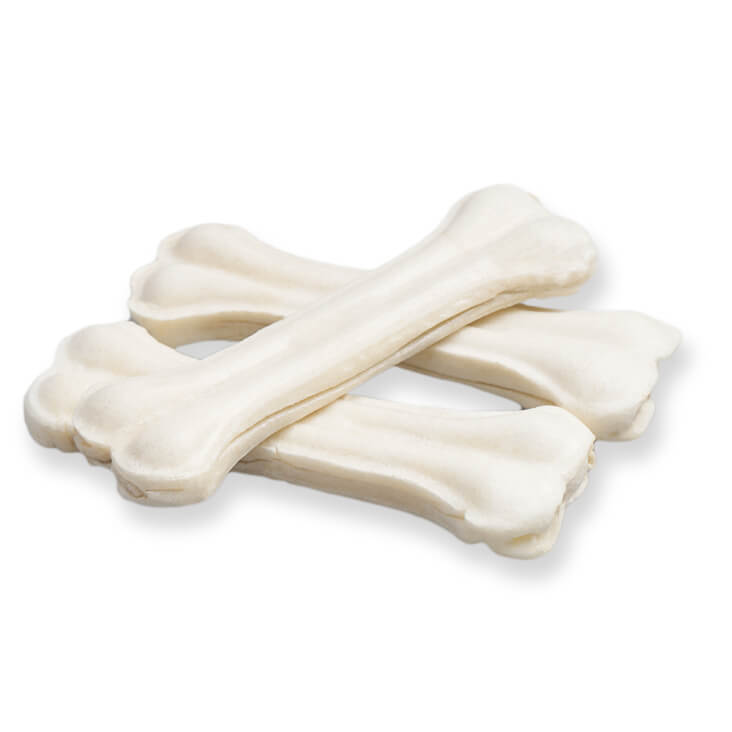
Unfortunately, titanium dioxide has been in the news lately due to fears about its toxicity.
The European Food Safety Authority has concluded that titanium dioxide “can no longer be considered safe as a food additive” because it can build up in your dog’s body and cause long-term damage.
On top of that, Allura Red AC (E129) is another common dye for rawhide products which has been reviewed multiple times both in Europe and the US, and banned or restricted multiple times.
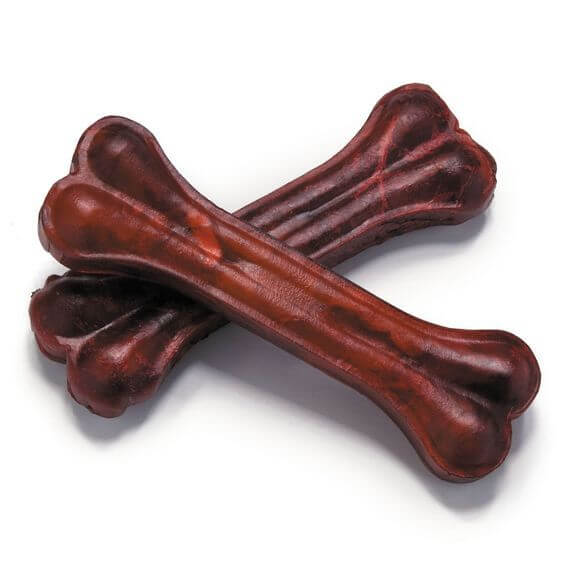
Preservatives #2
Finally, to give the rawhide the longest shelf-life possible, more preservatives are added and the treat is glued together.
That’s more potentially harmful chemicals being added into something that your dog will be chewing on and swallowing.
Despite all this, the main dangers from rawhide treats actually come from the rawhide itself.
Tooth Damage
Rawhide is extremely tough until it’s been softened up by saliva, and there’s a risk your dog could break their teeth on it. This is most common in dogs who chew very aggressively, such as Rottweilers.
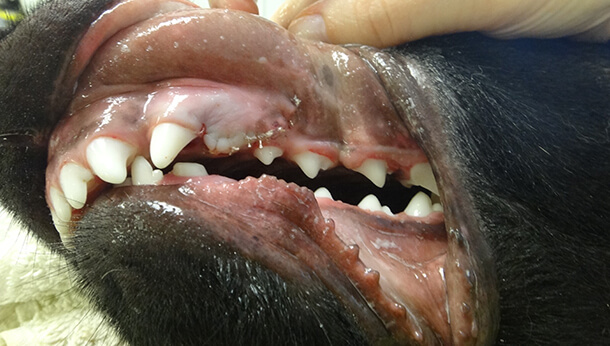
Choking Hazard and Fatal Obstructions
If large pieces of rawhide are broken off and swallowed there’s a risk of choking, even if the rawhide has been softened first.
Rawhide is also very hard for your dog to break down and digest.
While most food will be broken down into smaller pieces by stomach acid and enzyme, large pieces of rawhide won’t be. This is because of the amount of treatment that has been done to the rawhide to make it long-lasting (both on shelves and when being chewed). The preservatives and glues used have made rawhide pretty much indigestible.
This means if large pieces are swallowed they can lodge in your dog’s digestive tract and cause a blockage. These blockages can require surgery to remove, and if they aren’t resolved, they can even be fatal.
Quality Issues
Finally, there’s the fact that not all rawhide is created equal.
Rawhide produced in poorer countries is typically made under much more relaxed laws.
This makes it more likely that unpleasant chemicals have been used, and the quality and freshness of the hides used is probably worse.
But the most tragic thing depends on what animal the hides for rawhide come from.
Some rawhide sourced from areas of East and Southeast Asia have been found to be made of dog hide, as dogs are often bred for meat there.
Alternatives
So if you’re looking for something for your dog to chew on that’s safer, and less potentially upsetting, here are some alternatives:
Raw Bones
A classic for dogs, and one which can be very nutritious and filled with marrow. They should be raw, because cooked bones are very brittle and likely to splinter.
Antlers
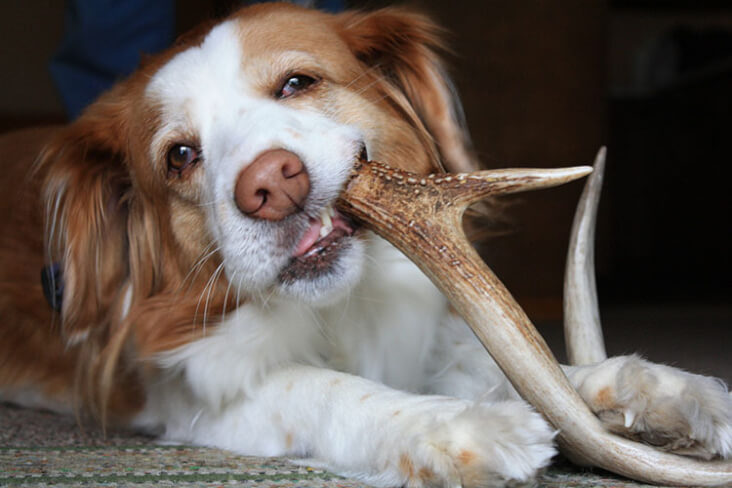
Like bones, though less likely to splinter and less nutritious. Be careful if your dog is chewing aggressively as it’s possible for them to break a tooth.
Edible dental chews
Much less long-lasting, but they have the benefit of cleaning your dog’s teeth and being completely digestible at the same time.
Fish Skin Sticks
Very smelly, but your dog will love these strips of dried fish skin. Best given to them outside.
Ears
Cow, sheep and pigs’ ears are all great replacements. They’re long-lasting, fully digestible and much safer than rawhide. The only downside is that they are quite smelly, as they are a natural product.
Final Thoughts…
When it comes to giving your dog a treat to chew on, there’s really no getting around it.
The small number of positives that rawhide treats can have for your dog are massively outnumbered by the negatives.
Our recommendation is to go for any of our alternative suggestions over rawhide.
The potential benefits of rawhide can be obtained from other chews, making the risks even more unnecessary.
As always, your experience may differ, but it really is better to be safe than sorry when it comes to your dog’s health.
Sources:
whole-dog-journal.com/care/finding-the-right-rawhide-chew-for-your-dog/
petful.com/pet-health/dangers-of-rawhide-chews/
akc.org/expert-advice/health/are-rawhide-chews-dangerous-for-dog/
thebark.com/content/dangers-rawhide-dog-chew-toys
feednavigator.com/Article/2021/06/17/EU-Titanium-dioxide-no-longer-regarded-safe-as-feed-additive
dogingtonpost.com/rawhide-good-bad-ugly/
dogingtonpost.com/10-safe-alternatives-to-rawhide-chews/





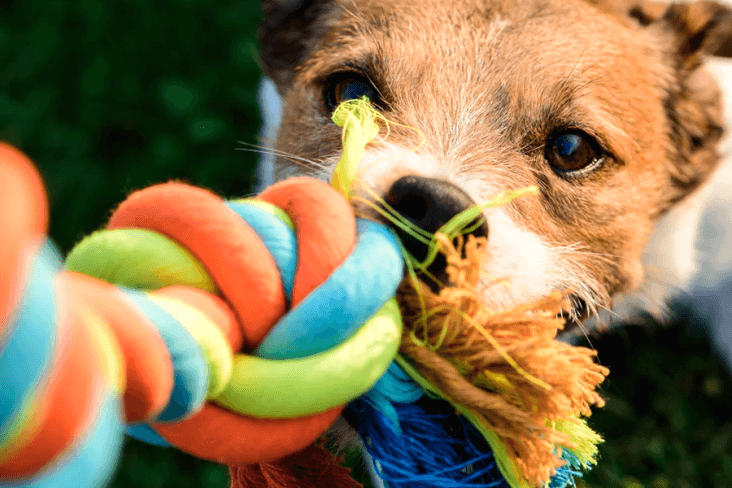
Comments